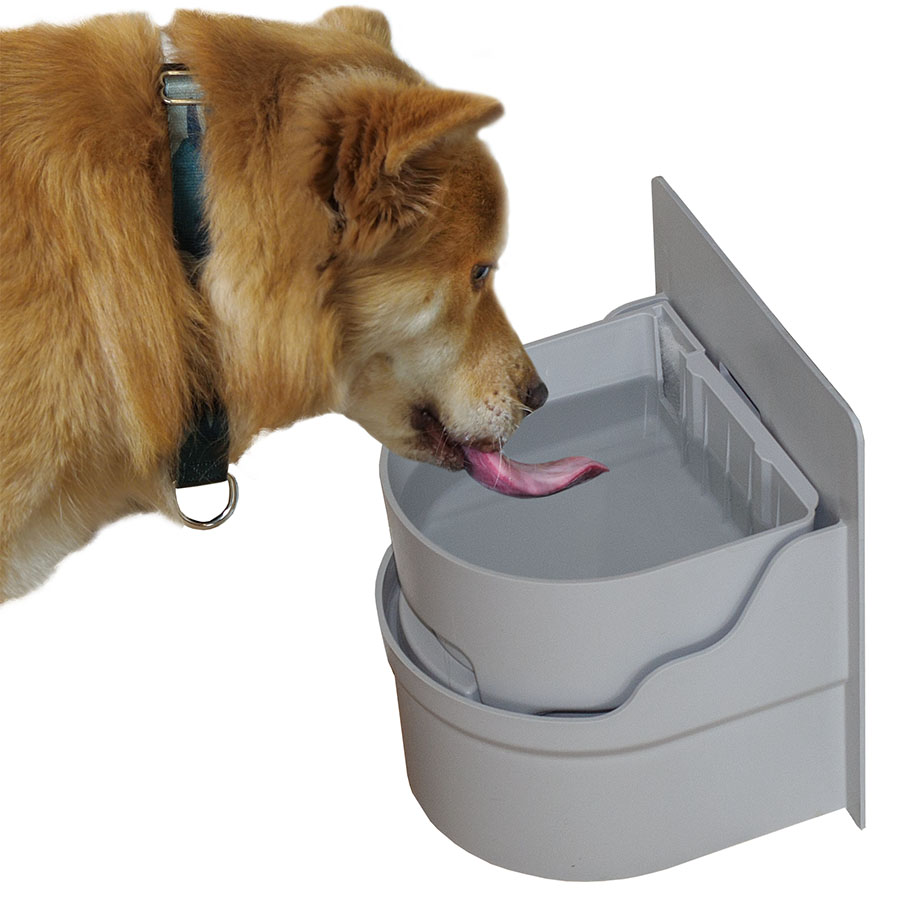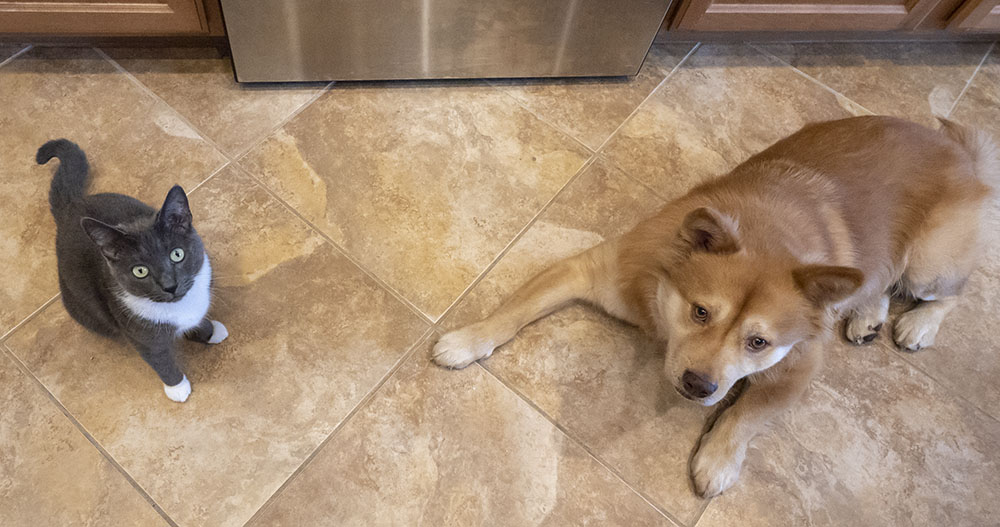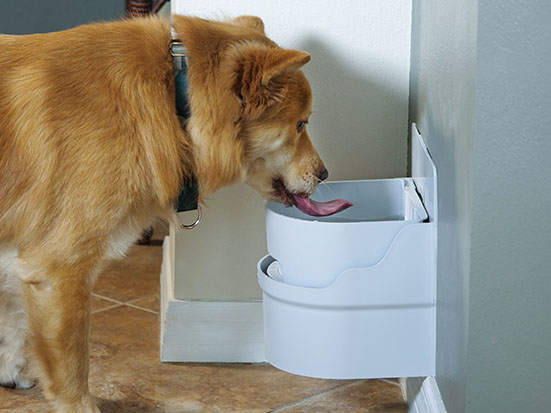Dogs need to drink plenty of water just like their human masters do. Water aids digestion, stabilizes body temperature, helps eliminate waste, and lubricates the joints. How much water is needed for good canine health? Veterinarians generally suggest dogs drink one ounce of water per pound each day. For example, a 40-pound dog would need to consume at least five cups of water. Water intake guidelines are even higher for dogs who are extremely active and live in hot climates. Young puppies might need as much as a cup of water every four hours.
Getting your dog to drink water can be a chore though. Many dogs aren’t drawn to their drinking bowls often. Taking a few licks of water here and there isn’t enough. Unfortunately, dogs can become dehydrated without ample bodily fluid. Dehydration is a serious concern for our furry companions too. Dehydrated dogs are sluggish and sallow. Dogs with dehydration may pant excessively, have dry noses and gums, or possibly vomit. Veterinary treatment with IV fluids is then imperative to avoid shock. Preventing dehydration in dogs is the best medicine. Always offer your dog access to fresh water. If they’re not taking the bait, here are five sneaky ways to entice your dog into drinking more water.
1. Give Your Pooch an Incentive
Your dog might need a bit of motivation to drink water. Sometimes, simple praise with a “good boy” and head pat will work. Other times, you’ll need to trick your dog with treats. Food-oriented dogs respond well when rewarded with treats. Train your dog to associate water with a quick bite to eat. Make your dog earn the reward by drinking a serving of water, not a few drops. Dogs soon learn to drink more water in hopes of scoring a snack. Be careful with food incentives though. You don’t want to overfeed your dog and cause weight gain. Pick a small, low-calorie option, such as training treats or plain Cheerios.
2. Make the Water Taste Better
Humans often struggle to chug down enough water because the taste is bland. Dogs have one-sixth of the taste buds that people do, but water is still pretty boring. Water is odorless, which doesn’t make it tempting to a dog’s strong nose either. Owners can improve their dog’s water intake by adding flavor. You might sneak in a tablespoon of low-sodium chicken or beef broth. Stir in some sugar-free peanut butter powder without xylitol. Mix in a few drops of lactose-free white milk. Perhaps infuse the water with fruits like apples or bananas. Avoid grapes and cherries that are toxic to dogs. If you’re concerned about pet allergies, simply add the juice from your dog’s canned food.
3. Add Water to Your Pup’s Meal
Watered down kibble doesn’t sound too pleasing to us. However, your dog will likely be too distracted by the meaty goodness to notice. Moistening dog food might make it more flavorful. Softer kibble could even help if your dog has dental health troubles. The bloated chunks of food will trick your dog into unknowingly drinking water. Pour your dog’s normal serving of kibble into a bowl. Mix in water and place it in the refrigerator. Let the kibble soak up the water for several hours until supper. If you use canned or raw food, the prep won’t take so long. You can add the water to soft dog foods right at feeding time.
4. Cool Down With Ice Cubes
Is your dog an avid chewer? Try trading a bone or your shoe for an ice cube. Frozen water still counts as water. Many dogs prefer munching on a solid ice cube than drinking a liquid. Ice cubes come with the added benefit of cooling dogs down. Crunching on an ice cube on a hot day or after vigorous exercise could prevent heat stroke. Simply fill a silicone ice tray with water and put it in the freezer. It’s best to pick a tray with small cubes to avoid hurting your dog’s teeth. Ice shavings would work if you’re worried about a choking hazard. Some pet owners also mix in low-sodium broth to make a tantalizing ice treat. Once frozen, pop the ice cube out and into Fido’s mouth.
5. Buy a Fun Drinking Fountain
Having a water bowl in every room can remind dogs to drink more often. Let’s admit that plain dishes with stagnant water aren’t that appealing though. Finicky drinkers might need to be persuaded more. Luckily, there are many automatic dog water bowl systems available. Dog water fountains provide a continuous supply of clean, cool water to slurp down. Running water may catch your dog’s attention and lure them in to drink. Most fountains have big reservoirs to keep water running whenever you’re away. Several models also feature water filters to remove debris and potential toxins. Search your pet store online for an affordable dog water fountain to keep your pet hydrated.
Remember too much of a good thing can be harmful. On the other end of the spectrum, too much water is also bad. Watch your dog’s water intake to prevent overhydration. Drinking more water than needed can poison your dog. Excessive amounts of water deplete the body of sodium and harm the kidneys. Look for overhydration warning signs, such as bloating, fatigue, and pale gums. Talk with a licensed veterinarian about the right amount of water for your dog. Finding the perfect balance of water intake and excretion is important for your dog to thrive. When needed, use the five tips above to trick any stubborn pups into drinking more water.



